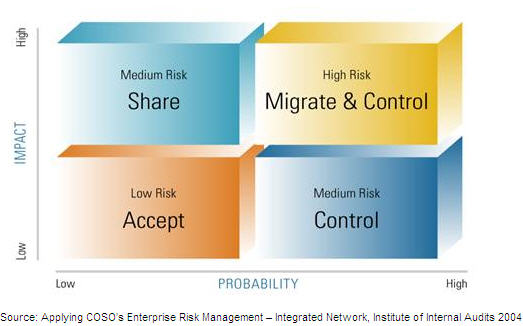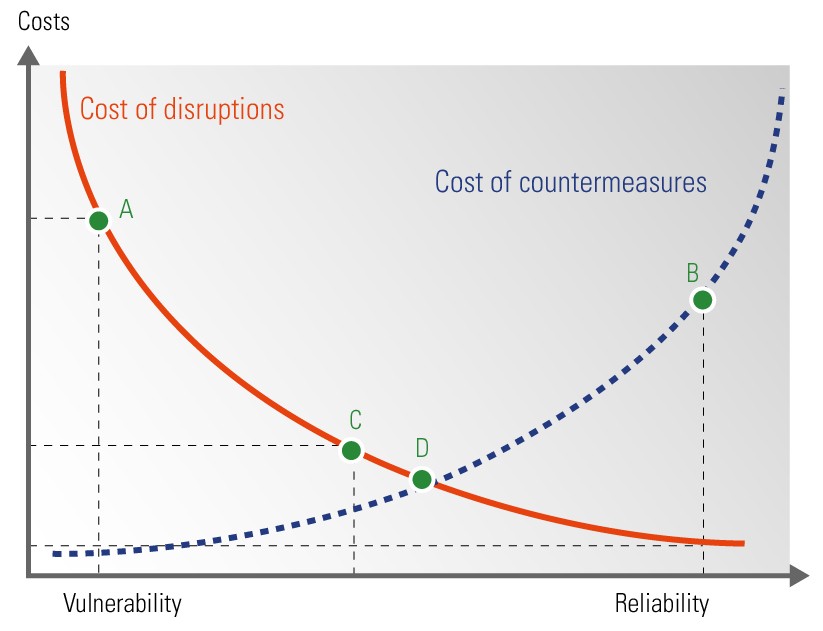This phase aims at selection of the right methods for Supply Chain Risk Mitigation. The choice of method is important since each item on the risk profile may require a unique mitigation effort. However, we can use some thumb rules in categorizing risks to select the correct mitigation strategy. This is aptly explained by COSO’s Risk Quadrant as illustrated below.

Designing a Mitigation strategy requires organizations to create large-risk data on events and probabilities. Categorization of risk events on the Probability – Impact quadrant and an organization’s risk tolerance are the key specifics in designing mitigation plans.
- Typically, organizations recognize and accept the risk of events with low impact and low probability.
- High-impact, low-probability risk events such as natural disasters and terrorist attacks can be insured. Their risk is shared with an external entity by paying a limited premium. Commodity derivatives can be another form of risk-sharing strategy. Low-impact, high-probability risk events are the most deceptive and are difficult to identify; hence, they mandate proper mitigation strategies. Such events occur everywhere in the supply chain, but are mostly ignored due to their initial low-impact nature. For example, manufacturing equipment often suffers from wear and tear. The cumulative impact of this wearing down leads to equipment failure, thereby creating a high-impact event. With such events escalating from low risk to high risk, the organization must institute a proper control mechanism to mitigate the risk.
- High-impact, high-probability risk events demand the highest attention and focus. Mitigation strategies like risk share, insure, transfer, buffer are adopted in combination with control mechanisms. The varying cost of a mitigation program is explained in the figure below. Organizations must strive to achieve the optimal balance between the mitigated cost of disruptions and cost of such mitigation.

Source: Supply Chain Risk Management in six steps, Husdal, http://www.husdal.com, 2009.
|